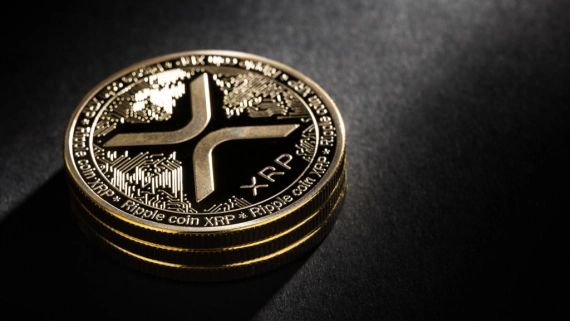

The traditional finance sector (TradFi) is embracing the tokenization of financial assets on public blockchains, with significant advancements in blockchain-based tokenization, according to Markus Infanger, Senior Vice President at RippleX.
In an exclusive interview with Cointelegraph during Paris Blockchain Week, Infanger expressed that TradFi’s integration of blockchain technology is becoming concrete and impactful.
“We’re starting a paradigm shift for blockchain technology, moving beyond the hype and into real utility.
“It’s starting to unfold,” Infanger remarked, indicating a significant shift towards practical applications of blockchain in traditional finance.
The potential for tokenized markets is enormous, with future projections estimating their value at $16 trillion, far surpassing the current total market cap of the cryptocurrency sector.
Infanger highlighted that the evolution toward tokenization is progressing on public blockchains, contrasting earlier expectations that it might be limited to proprietary technologies like JPMorgan Coin or IBM.
TradFi institutions are not only considering but actively engaging in tokenization projects using the XRP Ledger.
These firms are prepared with distribution channels and have clear applications for how they wish to utilize blockchain technology.
For example, HSBC has partnered with Ripple-owned tech firm Metaco to facilitate institutional investors in holding tokenized securities on a new custody platform, launched in November 2023.
Infanger also noted that Ripple is expanding its role within the financial ecosystem by integrating various blockchain solutions that enhance the utility of the XRP Ledger (XRPL).
Traditionally viewed as a payments-focused company, Ripple is now attracting attention from both TradFi and decentralized finance (DeFi) sectors.
“We have a custody arm, a payments arm and our contributions to the XRP Ledger.
“The combination is a holistic digital asset infrastructure value proposition for traditional finance and developers who want to solve DeFi problems,” Infanger elaborated on Ripple’s broadened focus.
Adding to Ripple’s array of offerings, the firm plans to launch its own United States dollar-pegged stablecoin on both XRPL and Ethereum, aiming to complement its institutional services.
Although details are pending, Ripple CTO David Schwartz previously discussed aspects of the stablecoin with Cointelegraph.
Infanger shared insights into the motivation behind Ripple’s stablecoin, emphasizing the growth potential of the stablecoin market, which could reach $2.8 trillion in five years—a significant increase from the current $130 billion.
He noted the ongoing demand for a high-tier stablecoin like USD Coin or Tether within the XRPL community.
“We really envision our institutional DeFi use case, on one hand, tokenization on XRPL and then in our payments product for optionality and some use cases alongside XRP using the stablecoin and for the XRP ecosystem as a whole,” Infanger concluded, outlining Ripple’s strategic vision for integrating tokenization and stablecoin applications within its platform.
Ripple has yet to confirm the launch date or the official name for its upcoming stablecoin.
To submit a crypto press release (PR), send an email to [email protected].
Disclaimer: This article is provided for informational purposes only. It is not offered or intended to be used as legal, tax, investment, financial, or other advice.
Read on Crypto Intelligence Investment Disclaimer





